While London is a hotbed of ultra modern architecture, with shiny buildings of metal and glass piercing the sky above the city, and suburbs all over England are filled with cookie-cutter estates, there are still many places in the country where more unique and traditional structures are the norm. The thatched cottages and timber-frame homes of Midsomer Murders and Miss Marple are not only the stuff of fiction or chocolate boxes — they are parts of remarkable historical villages that are still lived in and very much sought-after. From a coastal town in Devon to a village of limestone cottages in the Peak District, here are seven places that are going to take you straight to jolly old England.
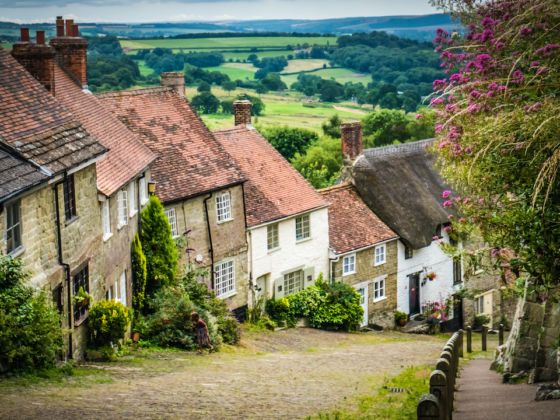

7 Adorable English Villages Straight Out of a Storybook
1. Worsley village, Greater Manchester
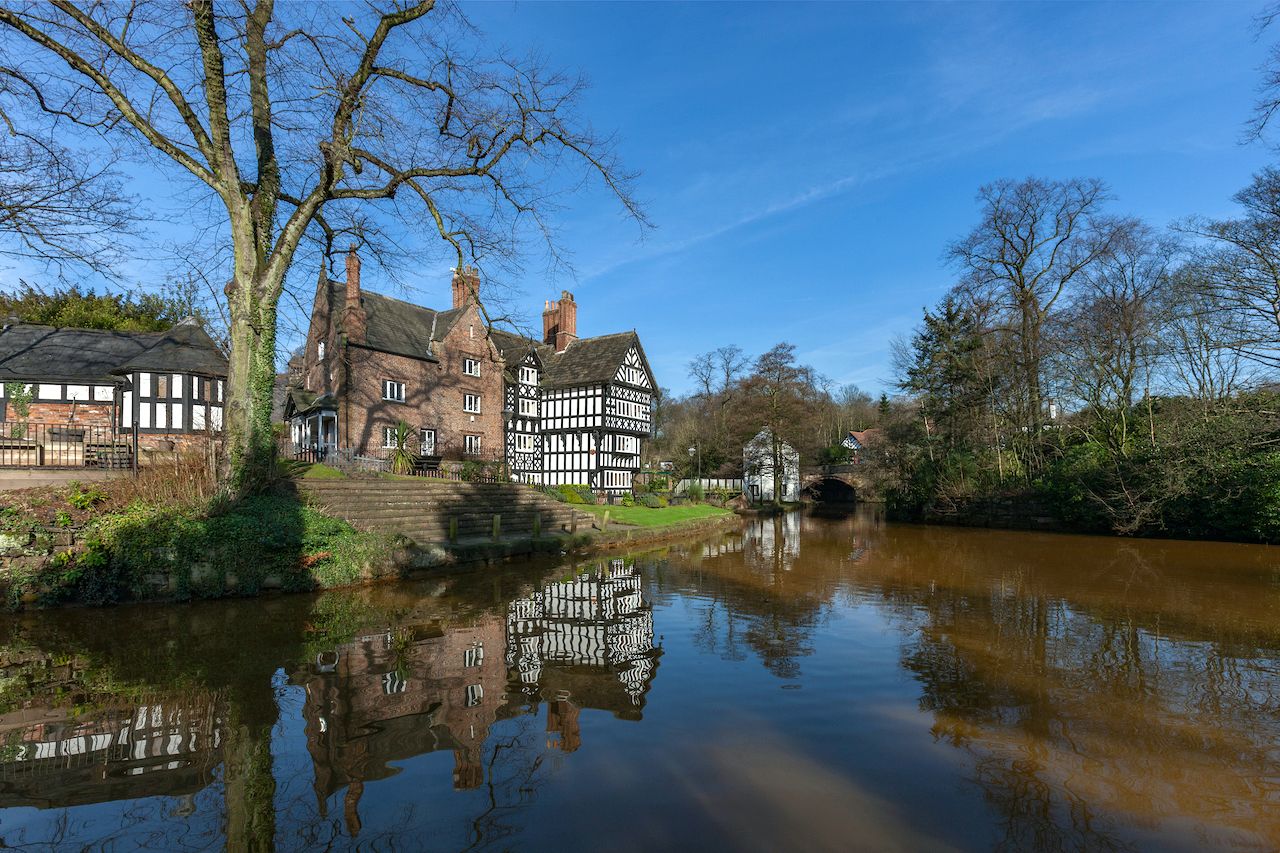
Photo: Steve Allen/Shutterstock
Worsley is the whole picturesque package: Beautiful timber-framed houses, a lawn with a Victorian fountain and daffodils come spring, and arched stone footbridges. But the real star of this hamlet is the tranquil Bridgewater canal which revolutionized the transport of coal from the local mines to Manchester, and fueled the industrial revolution, in the 18th century. The colorful narrowboats that cruise on the water make for a peaceful scene, especially when observed from the leafy footpath along the waterway. Follow the Worsley Heritage Trail for a lesson on the historical significance of the village and explore the 74 acres of surrounding woodland for the complete idyllic experience.
2. Milton Abbas, Dorset
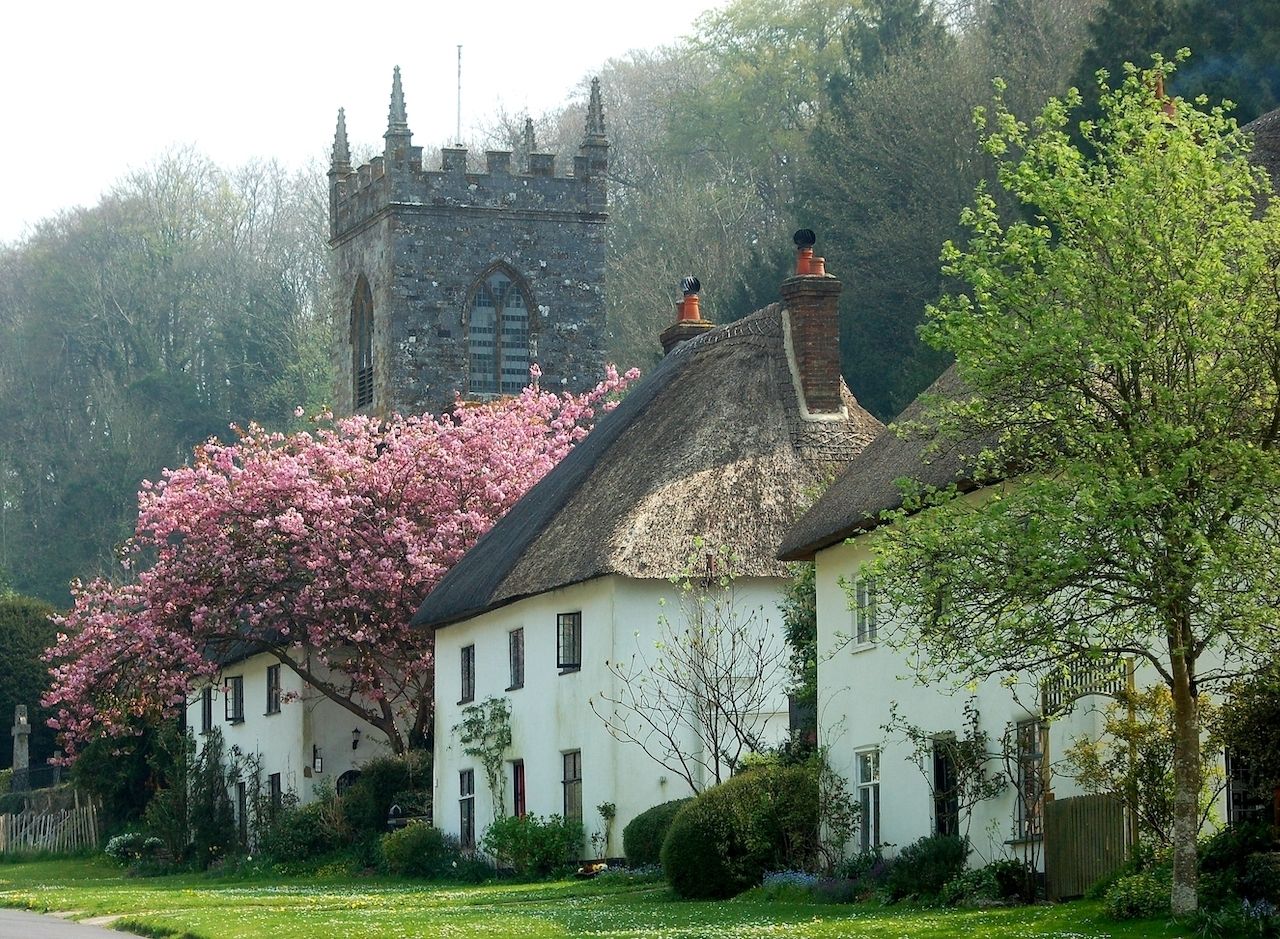
Photo: Shoarns/Shutterstock
Dorset is well known for its beautiful coastline, which comprises part of the UNESCO World Heritage Jurassic Coast, but those who decide to leave the turquoise waters and cliffs behind to go inland are unlikely to be disappointed. The Dorset Area of Outstanding Natural Beauty covers about half the county and the designation protects stunning landscapes and countryside like the valley setting of the village of Milton Abbas.
Built in the second half of the 18th century along a single street, the village is as picture perfect as it gets — cob and thatched cottages, each with a front lawn, perfectly line the streets. Some even have climbing rose bushes growing along the facade for good measure. Milton Abbey Church, a 14th-15th century religious edifice with gorgeous stained glass, and the neighboring Milton Abbey School are the icing on the cake of this dreamy hamlet. Some of the cottages are available to rent on Airbnb, and there are many walking trails around the village for those who want to stick around and explore for a while.
3. Tissington, Derbyshire
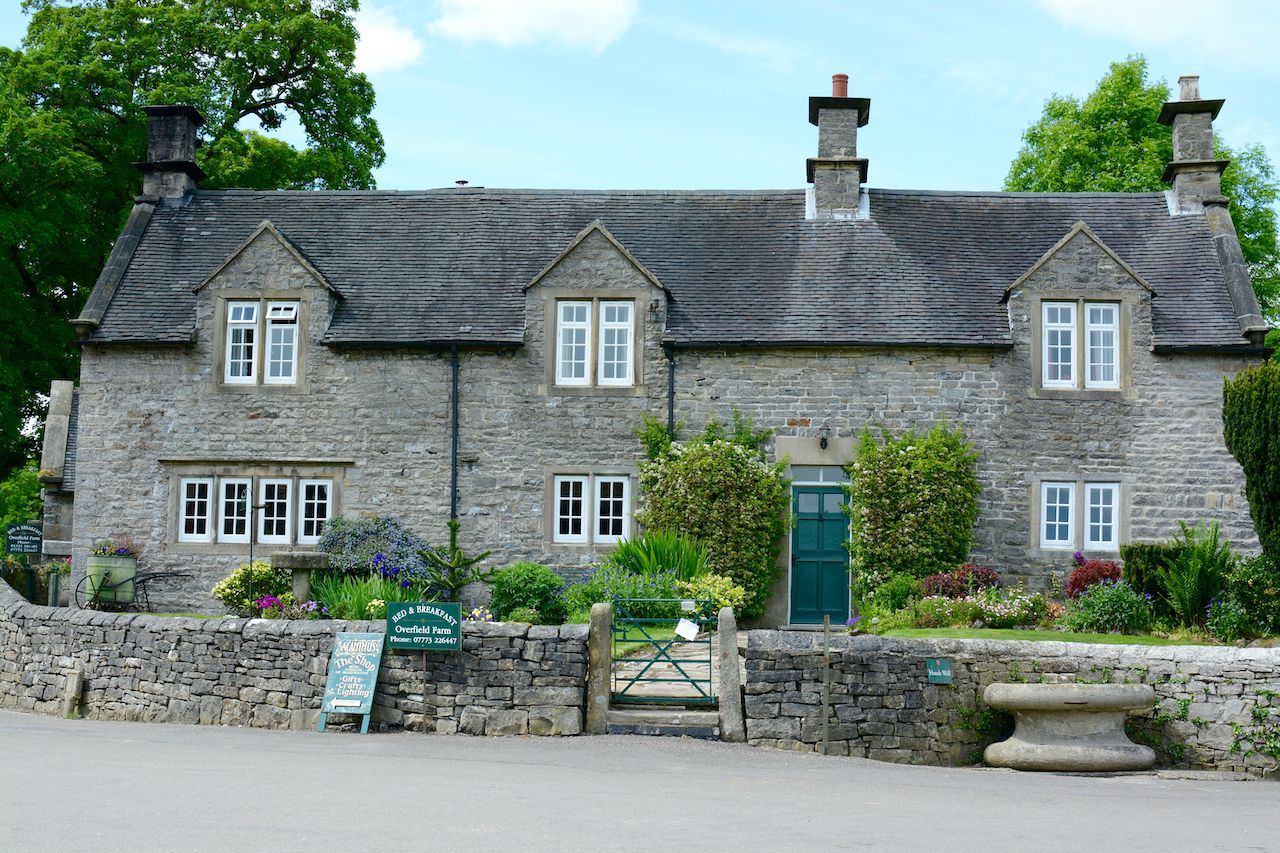
Photo: tornadoflight/Shutterstock
England’s Peak District does not need to be talked up — its natural beauty is proof enough that passing on it would be travel crime. But although the moors, rivers, hills, and lakes are plenty attractive, checking out the village of Tissington, located in the Derbyshire part of Peak District National Park, will add some architectural and historical charm to your visit.
Enter the village by passing through the lodge gates off the main Ashbourne to Buxton roads and be wowed by the long avenue of lime trees and the first few examples of limestone cottages that make the village’s reputation. Continue on to get to the heart of Tissington and to the magnificent residence that has been home to the FitzHerbert family for hundreds of years, Tissington Hall, where you can enjoy some tea alongside scones and mini-sandwiches. St. Mary’s Church is also worth your while, so make sure to take your time to wander the village and see all its sights. If you happen to be in the area on Ascension Day, you’ll be able to witness the unique tradition of “dressing” the village’s wells with intricate floral designs, an event that attracts large crowds every year. Walking or biking the 13 miles of the Tissington Trail is a great way to see the village and its gorgeous surrounding countryside.
4. Lavenham, Suffolk
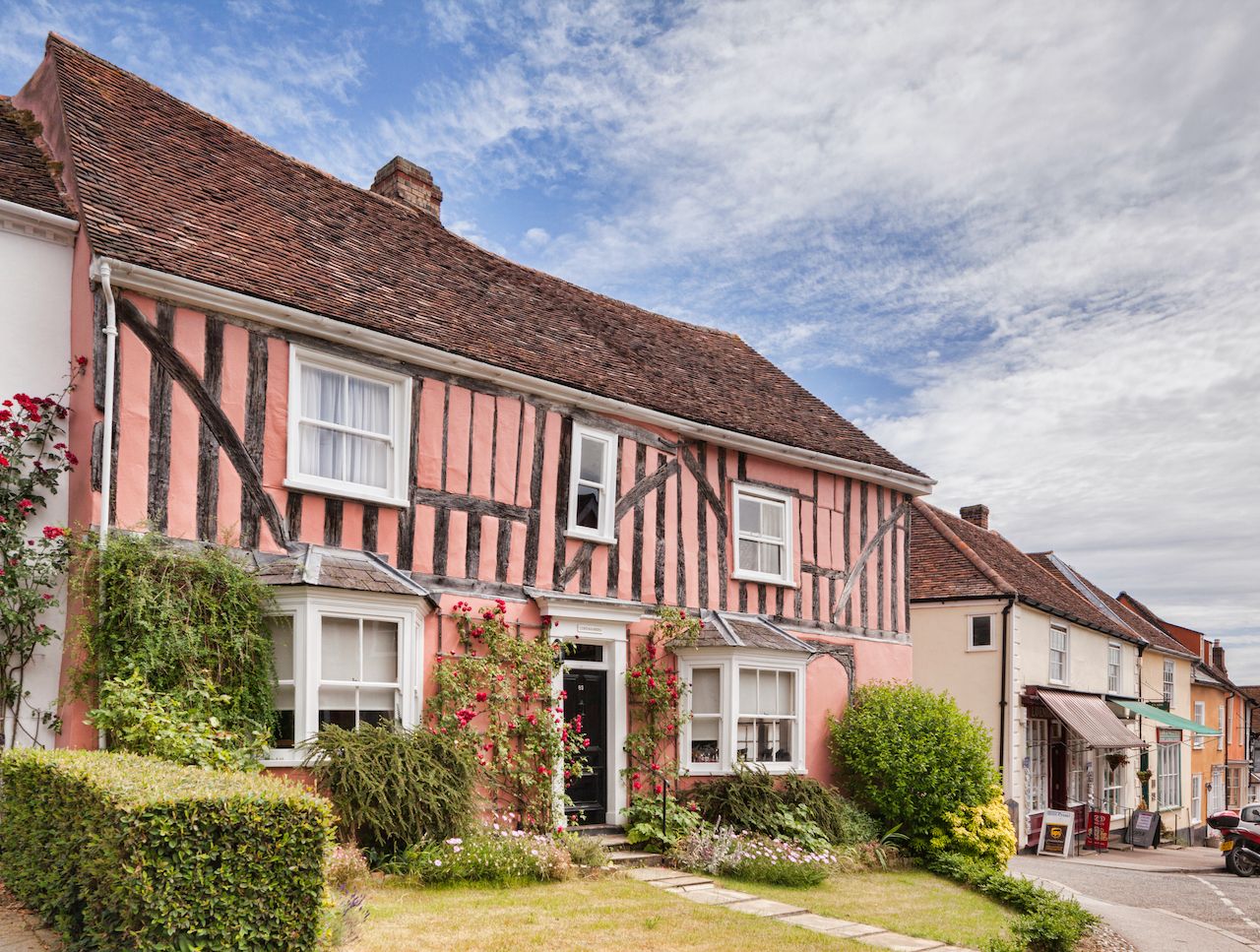
Photo: travellight/Shutterstock
Even if you’re not into traditional architecture, the crooked buildings that make up Lavenham should pique your interest. A historic village made up of colorful medieval houses, Lavenham owes its beauty to the wool trade that made it the 14th richest town in the country in the 16th century. When competition, trade sanction, and heavy taxes came under Henry VIII, the wool town fell into poverty and its inhabitants were unable to upgrade their oak-frame houses for something more modern, unknowingly preserving some of the most remarkable structures in England, like the pink Old Grammar School or the orange De Vere House.
The wonky houses served as the backdrop for Godric’s Hollow in the film Harry Potter and the Deathly Hallows – Part 1 and are full of great details, so take the time to observe them by following one of the local National Trust walking trails. Besides the quirky timber buildings that look like they are on the verge of collapsing, check out the tall and ornate 15th-century St. Peter and St. Paul Church for a different kind of medieval throwback. Lavenham is full of independent shops, cafes, and pubs, so you can make a day of your visit.
5. Beer, Devon

Photo: ian woolcock/Shutterstock
Located right on the Jurassic Coast and within the Dorset Area of Outstanding Natural Beauty, Beer is a village that’s known as one of England’s prettiest. Unlike what its moniker may have you thinking, the seaside village is more famous for its fishing, white cliffs, and shingle beach than for its brews, but it does have some good pubs to grab a pint. While the place is full of pretty cottages, it’s also the starting point of the South West Coast Path, a walk with beautiful views of the cliffs and the English Channel that will either take you to the eye-candy hamlet of Branscombe (west) or to the town of Seaton (east). Note that Beer is a popular destination for beachgoers, so don’t expect to have the place for yourself on a sunny day.
6. Shaftesbury, Dorset

Photo: ian woolcock/Shutterstock
Although technically a town and not a village, Shaftesbury is forever anchored in the collective psyche as a small and rural place thanks to the iconic 1974 Hovis bread advertisement filmed there and broadcast all over Britain for years. And it’s hard not to remember the young boy pushing his bike up cobblestoned Gold Hill, with its thatched cottages and views of the rolling hills, and not think that Shaftesbury is the archetype of the English village. But even beyond the images that TV has engraved into our brains over the years, the Saxon town is stunning. There are beautiful historical houses just about everywhere you look, and the top of Gold Hill and Park Walk both provide wonderful views of the countryside that served as the backdrop for some of Thomas Hardy’s novels. Seemingly unchanged for centuries, Shaftesbury is a great base to travel to the Jurassic Coast, Bath, and Salisbury, but it’s also a good place for a quiet gateway — if you like charming tea shops, pubs, and a hefty dose of nostalgia, that is.
7. Bourton-on-the-Water, Gloucestershire

Photo: Reimar/Shutterstock
The Cotswolds Area of Outstanding Natural Beauty is the country’s hub for cute hamlets, but none are as beautiful as Bourbon-on-the-Water, located in the heart of the region. The village is filled with the typical yellow limestone cottages that define the area, but what takes Bourton-on-the-Water up a notch is the River Windrush that flows across it, and runs along the green walking paths. The six stone bridges that arch above the river add to the village’s charm and are responsible for its nickname “Venice of the Cotswolds.” The village is a scene of tranquility and old-fashioned England, and, as such, it’s a popular destination, so long weekends and holidays are busy.